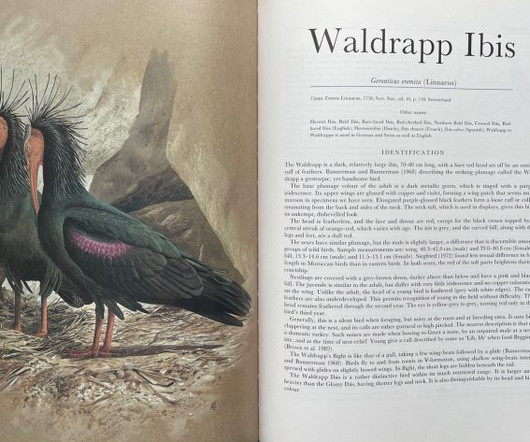The return of the Old Man
10,000 Birds
FEBRUARY 23, 2024
According to Storks, Ibises and Spoonbills of the World , a handsome volume written by James Hancock, James Kushan and Philip Kohl and published by Academic Press in 1992, Geronticus eremita “once nested in the mountains of central Europe, across northern Africa and into the Middle East. But this range is now much reduced.











Let's personalize your content